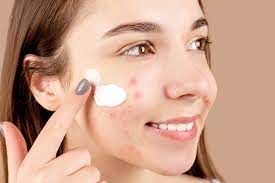Salicylic Acid is a well-known and widely used ingredient in skincare, particularly for the treatment of acne. It belongs to a class of compounds known as beta hydroxy acids (BHAs), which are oil-soluble, making it particularly effective for treating acne, especially in individuals with oily or combination skin. Below is a detailed look at the efficacy of salicylic acid in treating acne, how to use it, and other important considerations.
Efficacy of Salicylic Acid for Acne
Exfoliation and Pore Unclogging:
-
- Salicylic Acid 6 Cream is keratolytic, meaning it helps to exfoliate the outer layer of the skin. It works by loosening and breaking apart the cells in the outer layer of the skin, promoting the shedding of dead skin cells.
- Unlike alpha hydroxy acids (AHAs), salicylic acid is oil-soluble, allowing it to penetrate into the pores. This deep penetration helps to unclog pores by dissolving the debris and excess oil that can lead to blackheads, whiteheads, and other forms of acne.
Anti-Inflammatory Properties:
-
- Salicylic acid has anti-inflammatory properties, which help to reduce the redness and swelling associated with inflamed acne lesions, such as papules and pustules. This makes it particularly useful for treating mild to moderate acne.
Prevention of Future Breakouts:
-
- Regular use of salicylic acid can help prevent future acne breakouts by keeping the pores clear of blockages and reducing the likelihood of new pimples forming.
Compatibility with Other Treatments:
-
- Salicylic acid can be used alongside other acne treatments, such as benzoyl peroxide or retinoids, for a comprehensive approach to managing acne. However, it is important to use it properly to avoid over-drying or irritating the skin.
How to Use Salicylic Acid for Acne
Cleansers:
-
- Salicylic acid is commonly found in facial cleansers, which can be used once or twice daily. When using a salicylic acid cleanser, apply it to damp skin, gently massage it in, and rinse thoroughly with water. These cleansers are effective for mild acne and help keep the skin clean and free of excess oil.
Toners:
-
- Salicylic acid toners are another option. After cleansing, apply the toner to a cotton pad and swipe it over the entire face, avoiding the eye area. Toners help to ensure that any residual oil, dirt, or dead skin cells are removed, providing an additional level of acne prevention.
Spot Treatments:
-
- For targeted treatment of active breakouts, salicylic acid spot treatments can be applied directly to pimples. These treatments are often in the form of gels or creams and are typically more concentrated than cleansers or toners.
Leave-on Products:
-
- Salicylic acid is also found in leave-on products like serums, gels, or lotions. These products provide prolonged exposure to the active ingredient, allowing for continuous treatment of acne-prone areas. Apply a thin layer to clean, dry skin, and follow with a moisturizer to prevent dryness.
Important Considerations
Skin Type:
-
- Salicylic acid is most effective for individuals with oily or combination skin, as it helps to control excess sebum production and clear clogged pores. However, those with dry or sensitive skin should use it cautiously, as it can cause irritation or excessive dryness.
Concentration:
-
- Over-the-counter salicylic acid products typically range from 0.5% to 2% concentration. Higher concentrations are more potent and can be more effective for stubborn acne, but they may also increase the risk of skin irritation.
Frequency of Use:
-
- Start by using salicylic acid products once daily to see how your skin reacts. If your skin tolerates it well, you can gradually increase usage to twice daily. However, overuse can lead to dryness, peeling, and irritation.
Sun Sensitivity:
-
- Salicylic acid can increase the skin’s sensitivity to the sun, so it’s important to use sunscreen during the day to protect your skin from UV damage.
Potential Side Effects:
-
- Common side effects include mild stinging, redness, or peeling, especially when first starting treatment. If these symptoms persist or worsen, it’s advisable to reduce usage or consult a dermatologist.
Conclusion
Salicylic acid is an effective and widely used treatment for acne, particularly for those with oily or acne-prone skin. Its ability to penetrate and unclog pores, along with its anti-inflammatory properties, makes it a valuable tool in managing acne. However, it’s essential to use salicylic acid correctly, considering your skin type and the product’s concentration, to achieve the best results without causing irritation. For persistent or severe acne, consulting with a dermatologist is recommended to determine the most appropriate treatment plan.
